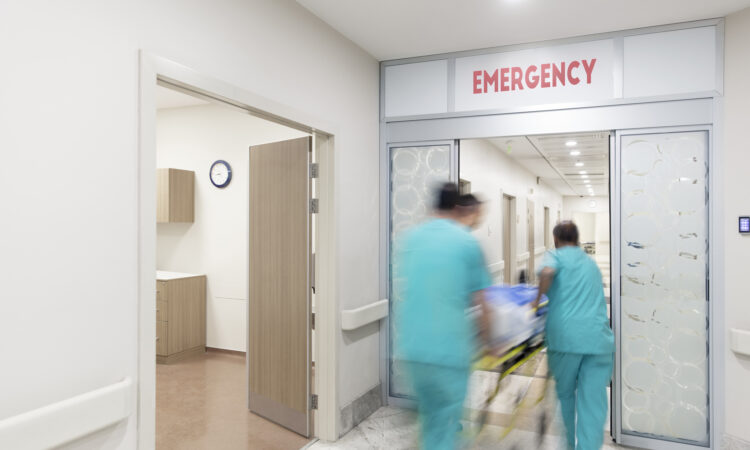
The emergency department (ED) is one of the most critical areas of any hospital, designed to provide immediate care to patients experiencing acute illnesses or injuries. Staffed by a team of dedicated professionals in full-time emergency department jobs, the ED is equipped to handle life-threatening situations, stabilize patients, and provide urgent treatments. This guide explores the essential role of the emergency department, the types of cases it manages, and why it plays a vital role in our healthcare system.
The Purpose of the Emergency Department
The primary purpose of the emergency department is to provide rapid, high-quality medical care to individuals who need immediate attention. This includes everything from treating severe injuries and medical emergencies to stabilizing patients before they receive further treatment.
Key Functions of the Emergency Department
The emergency department is designed to handle a wide range of urgent medical needs, including:
- Assessment and diagnosis: ED teams conduct quick evaluations to determine the severity of a patient’s condition, often using diagnostic tools like X-rays, CT scans, and blood tests.
- Stabilization: The ED focuses on stabilizing patients who may be in critical condition, ensuring they are safe before being admitted to a hospital unit or discharged.
- Acute treatment: ED physicians treat conditions ranging from minor injuries to severe trauma, administering pain relief, wound care, and other immediate interventions.
- Triage and prioritization: The ED uses a triage system to prioritize patients based on the urgency of their needs, ensuring those with life-threatening conditions receive prompt attention.
These functions make the emergency department essential for managing health crises and improving patient outcomes in emergencies.
Types of Cases Treated in the Emergency Department
Emergency departments are designed to address a variety of medical issues, from minor complaints to life-threatening situations. Some of the common cases treated in the ED include:
- Trauma injuries: This includes fractures, cuts, burns, and severe injuries from accidents or falls.
- Cardiac emergencies: Heart attacks and chest pain are common reasons for ED visits, as they require immediate intervention.
- Respiratory issues: Patients with breathing difficulties, asthma attacks, or pneumonia often seek urgent care in the ED.
- Stroke symptoms: Time is crucial for stroke patients, and the ED is equipped to provide rapid treatment to minimize brain damage.
- Acute infections: Severe infections like sepsis or appendicitis require immediate care to prevent complications.
The diverse nature of these cases requires a team of skilled professionals who are dedicated to full-time emergency department jobs, ready to respond to each situation with speed and precision.
The Role of Full-Time Emergency Department Jobs
The emergency department operates around the clock, and the need for constant staffing creates numerous full-time emergency department jobs. These positions are filled by a range of healthcare professionals, each playing a vital role in providing comprehensive care.
Key Roles in the Emergency Department
Some of the critical roles within the emergency department include:
- Emergency physicians: These doctors are trained to handle a variety of urgent medical conditions and provide immediate interventions.
- Nurses: Emergency nurses assist with patient care, administer medications, monitor vital signs, and support other staff during procedures.
- Respiratory therapists: They specialize in treating patients with breathing difficulties, often working alongside physicians in critical cases.
- Radiology technicians: These technicians conduct imaging tests, such as X-rays and CT scans, to help diagnose patient conditions quickly.
These professionals work together to ensure that the ED runs smoothly and that each patient receives timely, effective treatment.
Why the Emergency Department Is Essential to Healthcare
The emergency department is an essential component of the healthcare system, providing immediate care for patients who might not survive without urgent intervention. It serves as a safety net for the community, ensuring that individuals can access medical assistance 24/7. Without the dedication of healthcare providers in full-time emergency department jobs, hospitals would struggle to meet the demands of emergency care and to provide high-quality services around the clock.
For patients experiencing sudden health crises, the emergency department is often the first place they turn to, making it a vital part of public health and safety. The ED staff’s ability to respond quickly, prioritize critical cases, and stabilize patients ensures that healthcare facilities can save lives and improve patient outcomes in emergency situations.
Final Thoughts: The Lifeline of the Hospital
The emergency department is more than just a hospital unit; it’s a lifeline for patients in need of immediate care. Staffed by highly skilled professionals in full-time emergency department jobs, it provides critical services that support the health and safety of the community. Whether treating minor injuries or managing life-threatening conditions, the ED remains a vital part of our healthcare system, dedicated to delivering urgent care when it’s needed most.




